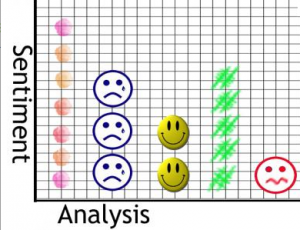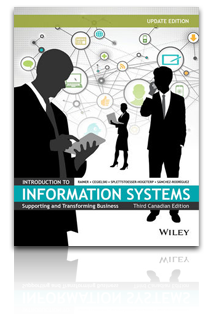Description: MOBI is part of an emerging technology that can tell a company almost instantaneously how people are feeling about a particular business, executive, product, stock, or advertising campaign
Source: Businessweek.com
Automated sentiment analysis is an emerging field that overlaps with many others such as business intelligence, customer service, and brand reputation management, and the market is hard to measure. Many types of sentiment software use a technology known as text analytics, which extracts insight from text, such as in social media, news articles, or internal documents and databases. The market for text analytics alone may rise to $978 million in 2014 from $499 million in 2011, according to an October 2009 report by Forrester Research (FORR).
The technology makes it possible for nearly anyone to analyze consumer feelings without having any inside knowledge of the company. For example, WiseWindow looks at certain industries such as the airline industry. The company has been able to determine that a new Southwest Airlines (LUV) ad campaign that touts a frequent-flier program isn’t as popular as a previous one, says WiseWindow Chief Executive Officer Sid Mohasseb. The previous “Bags Fly Free” campaign emphasized that, unlike rivals, Southwest doesn’t charge for checked baggage. “They’re losing market share of opinion,” he says. Mohasseb declined to say which airlines, if any, are his clients. Southwest declined to comment. Read rest of story
Questions for discussion:
- What is “sentiment analysis” and how can a business benfit by using it?
- Are there any downsides to using this form of Business Intelligence?



Kuda
Sentiment analysis seems to be some sort of technology that is being used as a data mining tool to extrapolate the views that customers have about a particular product. It seemingly uses some algorithms to divide between good and bad sentiments on the web. This information is then useful for influencing company strategy towards the services or goods that they offer. By so doing, a company can assess whether its core strategies are helping them gain acceptance or are being producing counterproductive results. Such an analysis can be beneficial in ascertaining demand and the dates at which a product is likely to be sold. However, this technology “can be expensive, time-consuming, and difficult to measure. Like an example given, bad comments that come in don’t necessarily entail a bad product. And going through some of the comments under the article it’s interesting to note that one writer questions the necessity of such technology because he argues that a company knows when they are making a good product and when they are not so maybe such a technology although beneficial is not as good.
mike
Although sentiment analysis tools obviously would have great benefits, it may not necessarily be the best measure of gauging people’s true feelings about a product or company all the time. Articles posted on the web, or extracted from newspapers, blogs etc. have been posted there voluntarily. People who have a negative opinion about a company or product are more likely to complain, than people with a favorable opinion are to leave positive feedback. Traditional methods of research ie. Focus groups, surveys, etc. tend to use methods of random selection in order to obtain a sample of the population that would be representative of the population. The information gathered by sentiment analysis tools is being obtained from voluntary sources. What dissatisfied customers were angry and blogged with negative comments in numerous locations on the web? This would show up in the data and assume that a larger percentage of the population had a negative attitude than other methods of info gathering might. I am not saying this would happen all, or even most of the time, or that sentiment analysis would be useless, jus t that the potential for results to be inaccurate are a possibility.
Taofikat Awopeju
Sentiment analysis involves classifying opinions in text into categories like “positive” or “negative” often with an implicit category of “neutral”. A classic sentiment application would be tracking what bloggers are saying about a brand like Toyota. Sentiment analysis is also called opinion mining or voice of the customer. There are lots of startups in this area and conferences. it can also be the process of training a computer to identify sentiment within content through Natural Language Processing (NLP). Various sentiment measurement platforms employ different techniques and statistical methodologies to evaluate sentiment across the web. Some rely 100% on automated sentiment, some employ humans to analyze sentiment, and some use a hybrid system.Sentiment Analysis is a useful metric when taken in concert with others, but you would be ill-advised to base a strategy on sentiment alone. As with any metric, context is important, and so are the human insights that drive strategy.Such an analysis can be beneficial in ascertaining demand and the dates at which a product is likely to be sold.